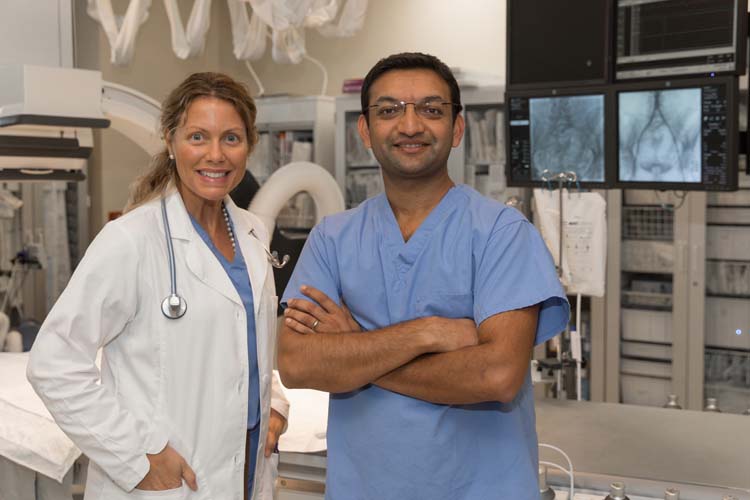
Dr. Dinesh Patel is a cardiac surgery specialist whose skills are so sought-after that he performs procedures at hospitals in Melbourne (Health First), Jacksonville (Memorial Hospital and St. Vincent’s Medical Center) and at Sebastian River Medical Center.
One of the procedures he performs is implanting a heart pump called the Impella, which is the smallest in the world. The pump, which is usually used for a short period while the heart is being surgically repaired, is manufactured by medical device maker Abiomed, developer of the first-ever total replacement artificial heart.
The International Journal of Angiology as well as the U.S. National Library of Medicine say these Impella pumps are “miniaturized, percutaneously-inserted ventricular assist devices, or VADs” which, in plain English, means they are heart pumps that are small enough to be inserted through the skin and along the arteries rather than by cutting the chest open to access the heart.
Their mission is to stabilize potentially life-threatening circulatory problems.
Patel says their journey begins by going in through the femoral artery, up into the heart and then descending into the lower chambers of the heart to temporarily take over pumping blood. “Basically,” Patel explains, “they help the heart, the left ventricle, pump blood [more] efficiently.”
A quick brush-up on cardio physiology might be useful here.
There are four chambers inside the heart. The lower chambers are called the ventricles. The lower-left ventricle is the heart’s main pumping chamber, though both the left and right ventricles can get “overworked” to an extent that leads to heart failure.
Indeed, heart failure occurs when blood cannot be efficiently pumped in or out of the heart. Failure can occur via a fast or a slow progression. The heart muscle attempts to make up for inefficiency by getting larger in order to hold more blood and the strain of attempting to maintain the same volume of blood being pumped can – in laymen’s terms – simply be too much for the muscle to handle.
According to the Texas Heart institute, “In most patients, heart failure occurs because the left ventricle fails. As heart failure progresses, the stress on the left ventricle becomes so great that it cannot send enough blood to the body’s other organs. When medicines and pacemakers no longer help the heart, patients need a heart transplant or a mechanical pump.”
The Journal of Angiology’s assessment of the Impella pumps is simple and to the point. “These devices,” it says, “have proved easy to implant, performed well and were associated with a low rate of adverse events.”
According to Patel, Impella pumps are most commonly employed under two sets of circumstances.
First, he says, is when “somebody has what we call cardiac arrest or cardiogenic shock and the second use is if the patient has a blockage,” inside the arteries of the heart.
“For any kind of acute heart attack,” Patel continues, “what we call an ‘ST elevation myocardial infarction’ – that’s the name of one kind of heart attack – the artery is completely blocked off. In that situation it’s always an emergency and we have to open that artery up within 90 minutes. While doing that, we use this pump.”
Here, Jennifer Konowitz of the SRMC catheterization lab joins the conversation, saying these pumps “allow the heart rest. So it’s working while their hearts can rest and repair” while [the pump] creates better blood flow.”
She adds that the device is typically left “in for 24 to 48 hours.”
“The most common use is for short-term duration because, remember, the way it goes to the artery in the leg is through a tube – which is a sizable tube – and that can occlude the blood flow,” Patel says. “That can form a blood clot while this tube is in and when the pump is in you have to give patient a blood thinner. So all those things could be an issue, you know?”
Konowitz then volunteers that – on rare occasions – Impella devices can also play a key role in patient transports.
“Sometimes patients need surgeries that maybe we don’t offer in this hospital or in this area and they need to be transported out,” she says. “We just had a patient not too long ago who needed a highly specialized surgery in Gainesville. The Impella really helped give us that time for air transport.”
Patel concurs. The Impella devices are, he says, “a nice bridge for us. We can provide the care that we can do here, but then if the patient needs something highly specialized, they can still get that excellent care at a center that specializes in that and still have this life-saving device on board.”
Dr. Dinesh Patel is in practice with Dr. Charles Croft at 1402 Oak Street in Melbourne. The phone number is 321-722-3288.



